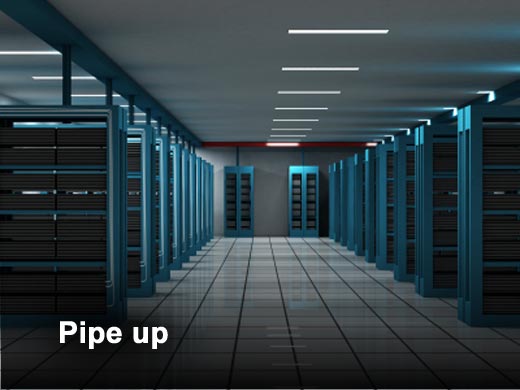IT departments today already have to struggle with a wide array of influences, pressures and goals. Now they have yet another thing to think about: The environment and how their technology decisions may impact our planet. But according to Logicalis, an international provider of integrated information and communications technology (ICT) solutions and services, green doesn’t have to be hard.
One place to start when looking toward a “greener” future for your organization is inside the data center itself. When cooling accounts for as much as 40 percent of the cost of powering a typical midsize data center (around 2,500 square feet), evaluating the data center’s airflow can be one of the best green decisions you’ve ever made – both in terms of the environment and the dollars you can save.
“Airflow is one of the easiest ways to impact your company’s bottom line by reducing power consumption,” says Bob Mobach, practice director, data center infrastructure, at Logicalis. “By making a few minor adjustments, you can save money, significantly reduce your electricity requirements, and create a better functioning, more comfortable data center environment as a whole.”
To help CIOs and IT managers assess their strategies, Logicalis has developed a checklist of six steps to create better airflow in the data center.
Click through for six steps to create better airflow in the data center, as identified by Logicalis.
Make sure your raised floors are completely free for maximum airflow. A minimum height of at least 18 inches is best. Plug all openings and check your flow tiles for proper CFM ratings; adjustable flow tiles can help you better balance your room.
Implement some form of containment. Return air should be kept separate from ambient room temperatures through chimney design, central exhaust ducting, or containment setup.
Any openings – even the smallest ones – cause a decrease in your room's efficiency. Make sure to block off all unused rack spaces as well as the areas between the rack and the outer cabinet shells.
For any legacy equipment that is not front-to-back cooled, adjusting cabinets or enclosures are available to help route side-to-side airflow and direct this to a front-to-back pattern.
Consider hot aisle containment before you consider cold aisle containment. Cold air reservoirs are often too small to help sustain a switchover on the HVAC equipment from utility power to generator power in case of an outage. Hot aisle containment better protects you from this in high-density environments, while the operating temperatures in both hot and cold aisles are much more comfortable for IT personnel allowing room temperatures up to and sometimes over 75 degrees while still maintaining ASHRAE standards.
Consider implementing variable speed drives and motors on your HVAC equipment to capitalize on the efforts made to green your data center. A Logicalis Applied Math study of your site can help you visualize the environment to implement the changes.









